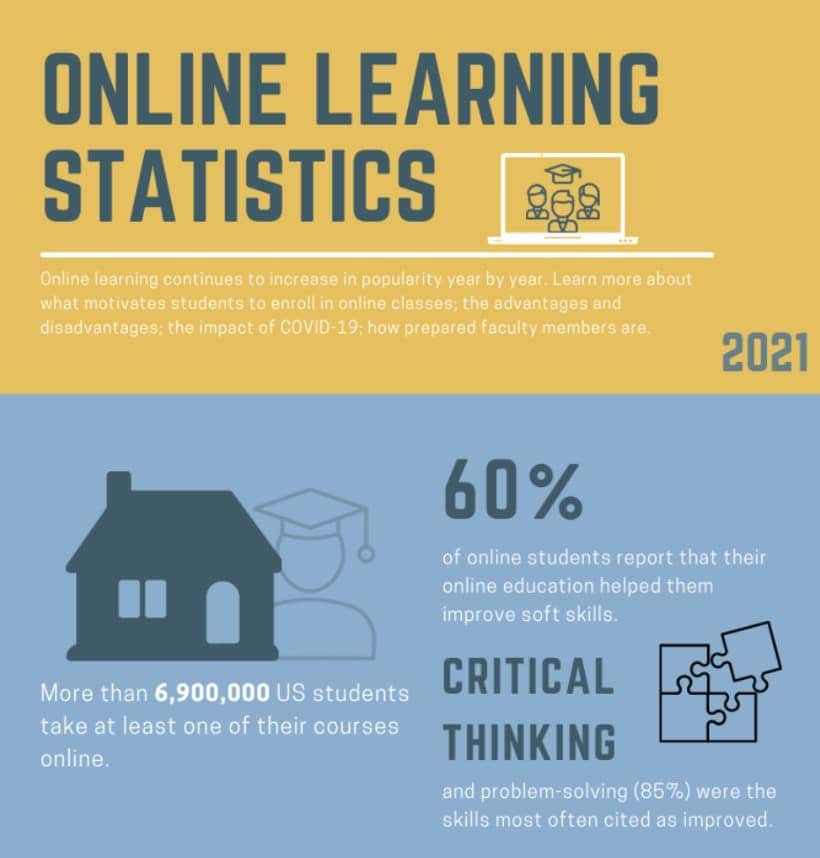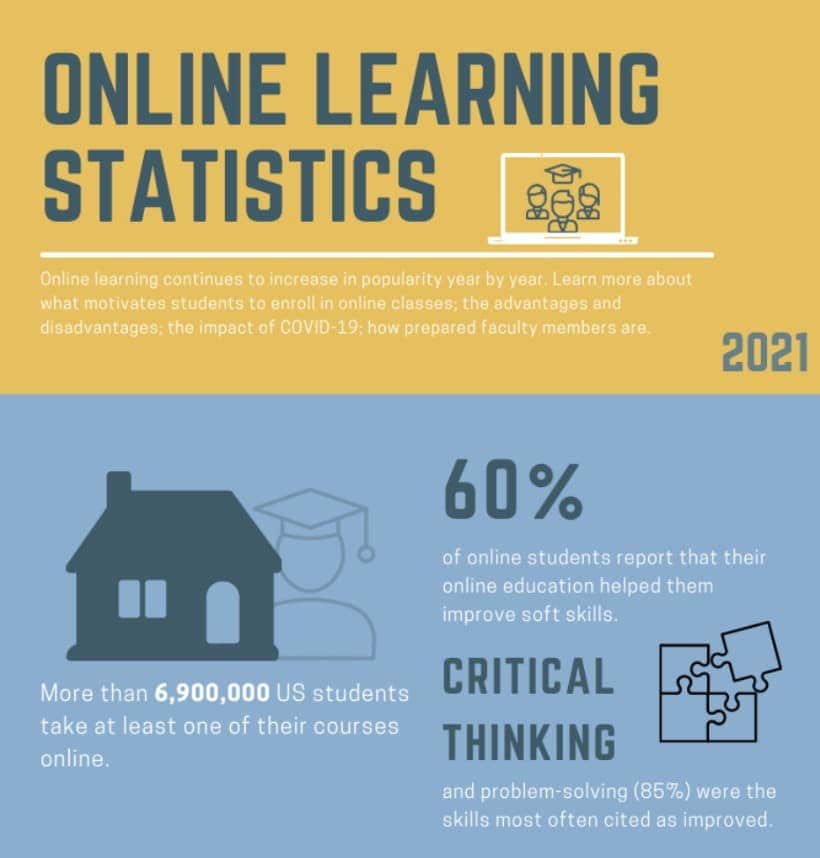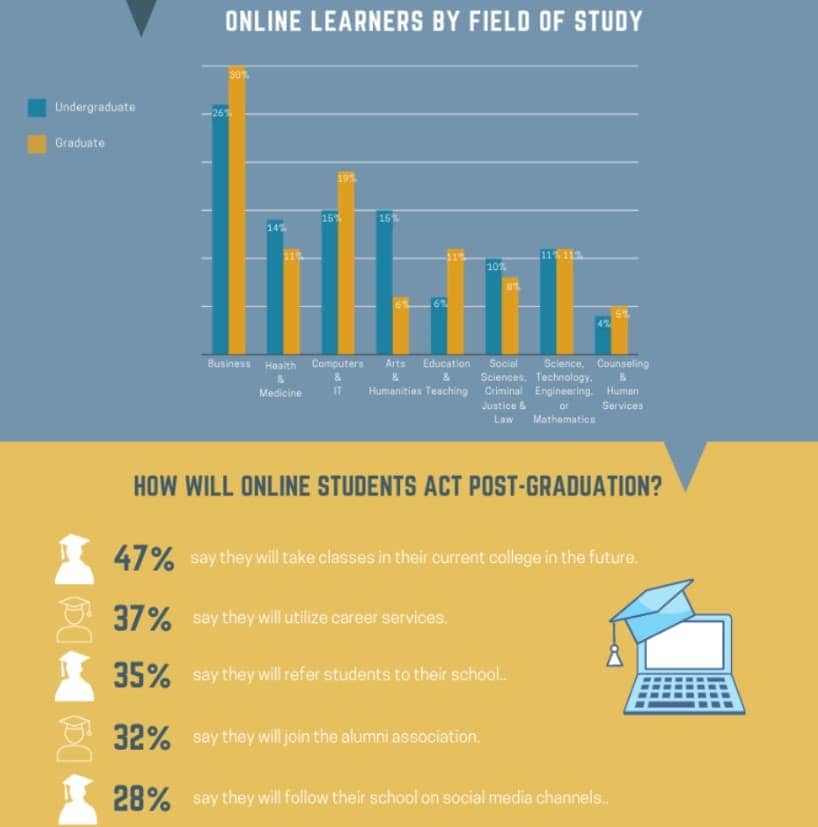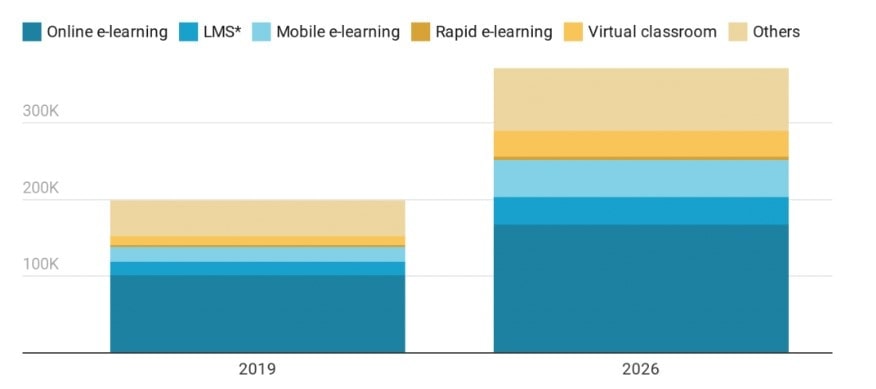In this article, I have Shared Online Learning Statistics.
Online education is becoming a more popular option than regular programs.
We see it all the time as a viable option for kids of various ages and backgrounds. As far as I know, there is no such thing as “online learning.” What are the factors that have made online learning so popular? Do online courses have any advantages or disadvantages?
A look at what online learning consists of and how it’s expected to evolve, from students’ desires to pricing to COVID-19 restrictions.
Table of Contents
What is Online Learning?
Distant learning over the internet is a relatively new concept known as “online learning.” Technology, psychology and sociology are brought together to create a more effective method for dealing with current educational difficulties.
Online education is typically less expensive than traditional schooling because it eliminates the need for students to pay for housing and transportation. Others, on the other hand, argue that the loss of face-to-face connections with classmates and professors outweighs the savings in money.
It’s not the only choice when it comes to full-time online schooling.
How many different sorts of online education are there?
TEC, MNF2F, ONLINE, and hybrid or blended courses are the four main categories of online learning (HYBR). Take a closer look at what each of these subheadings represents.
These classrooms, which include learning management systems as well as other technology-enhanced teaching methods, are known as TEC classes (LMS). In most cases, students have access to course materials and a syllabus 24 hours a day, seven days a week.
For the most part, MNF2F classes take place exclusively online, with only a few opportunities for students to meet in person. Among the few that do occur are introductions, review work, and examinations.
It’s all done through a computer screen. Students and professors communicate using a learning management system (LMS) and are well-versed in the usage of both synchronous and asynchronous resources.
At least 30 percent of the required face-to-face contacts are replaced by online activities in HYBR courses.
In a hybrid course, students spend less time in the classroom because of the use of technology to supplement classroom instruction and communication.
Online Learning Statistics: U.S. & COVID-19 Impact



Pros & Cons of Online Learning
Online learning has many advantages, but it also has several disadvantages that make it a possible danger to the effectiveness of any classroom. Online learning.
A student’s perception of online education can be profoundly affected by seemingly inconsequential factors like their preferred learning method.
Why is online schooling good or bad, then?
Discover more by continuing to read.
It can take place anywhere
One of the most major advantages of online learning is that students don’t have to show up in person. Students from all over the world can participate remotely in an online classroom.
Pupils no longer have to worry about distance when they’re studying. All a student needs to take online classes is a computer and an internet connection.
It’s student-centered
The nature of online chats means that students frequently reply to both the material and the feedback of their peers, resulting in a bigger group having several smaller talks.
It is because of this tendency that online learning is seen as more student-centered than traditional education. Students’ points of view
Access to resources & creative learning opportunities
In addition to having access to educational resources from anywhere in the world, students can benefit from professional guests during online training.
Because they don’t have to walk around to participate in a class and guide students through a topic, it’s much easier for these guests to attend lectures. Additionally, pupils’ problem-solving skills can be honed through online instruction.
Technology limitations & accessibility
We must ensure that all students have access to the required technologies before any online programme can hope to prosper. However, even if every student has all they require, technology alone will not enough.
Regardless of the tool we’re using or the issue with our internet connection, we’ve all encountered interruptions of various kinds. Consequently, online education may be seen as a less educational platform because of these disturbances.
Is Online Learning the Future of Education?
Quick Links:





